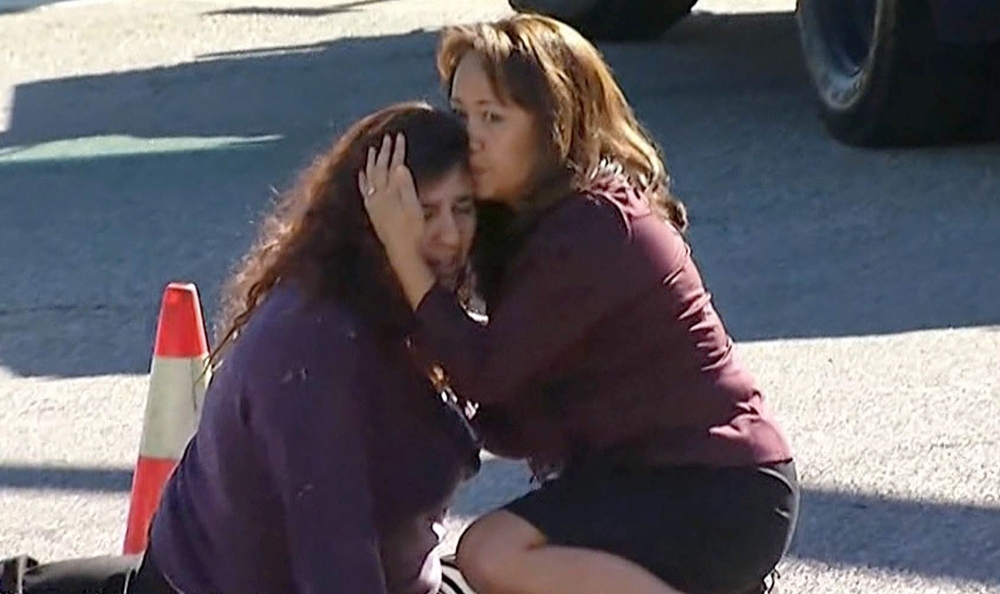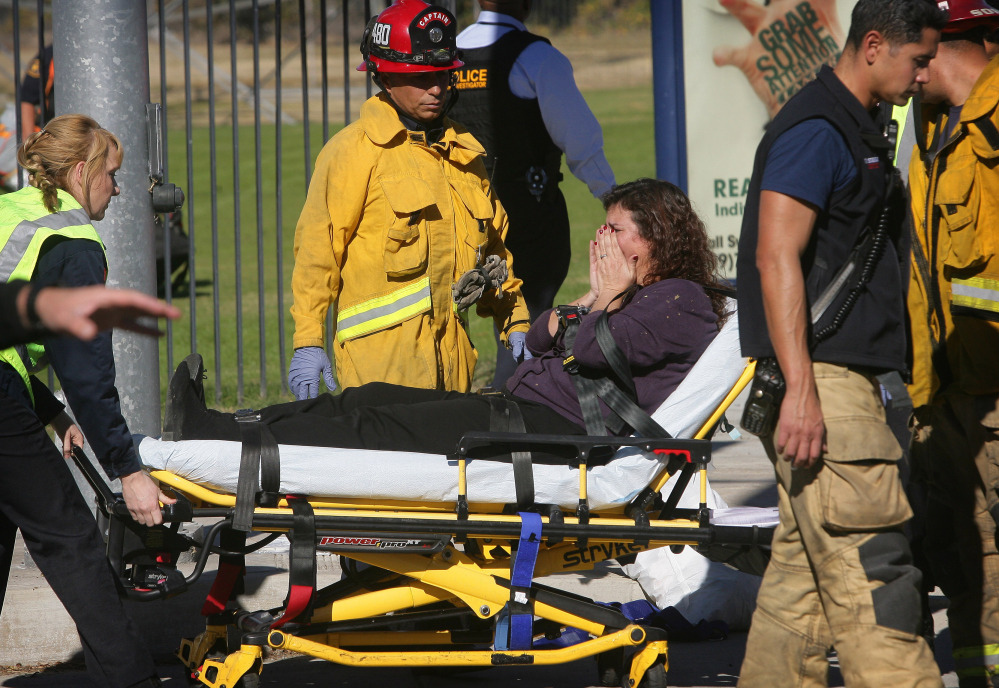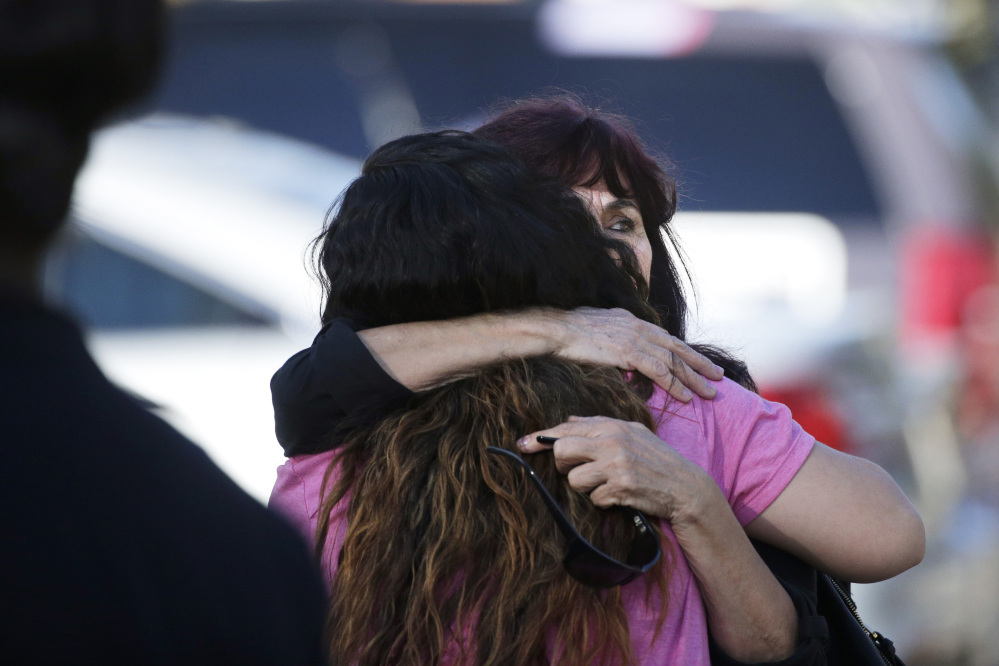WASHINGTON — Why did they do it?
The California rampage that left 14 dead shows the motives behind mass violence can be complex and difficult to determine. The careful planning, multiple shooters and military-style weapons might seem to match up with recent terror attacks. But other circumstances — killing people known to an attacker, for example — could be more in line with the deep anger and personal frustration of a workplace assault.
Pinpointing a motive can be that much harder when a suspect commits suicide or is killed without leaving behind a manifesto detailing ideological views or personal grievances.
Federal authorities are still exploring the reasons for Wednesday’s mass shooting at a San Bernardino, California, social services center. Police say the two suspects, Syed Rizwan Farook, a 28-year-old county restaurant inspector, and his wife, Tashfeen Malik, 27, were killed later in a shootout with officers.
The FBI says it’s exploring possible motives, including terrorism or workplace violence. Attorney General Loretta Lynch, echoing comments earlier in the day from President Barack Obama, said investigators had yet to determine whether it was “workplace rage or something larger or a combination of both.”
“What happened doesn’t fit the standard model for either, and that’s one of the things that makes it more confusing,” said Mark Pitcavage, an expert on extremist ideologies at the Anti-Defamation League.
“The idea of two people participating in a workplace-violence shooting, that’s just very rare,” he added. “On the other hand, if this was ideologically motivated … the target that was chosen is such an unusual target.”
It’s not uncommon for acts of extreme violence to be driven by mixed or confusing motives, particularly in an era of pervasive social media when groups like the Islamic State can blast out public exhortations and reach an audience of the disaffected and angry more easily than ever before.
“I think what we have to come to grips with in America is that this is no longer a neat package,” said Erroll G. Southers, a former FBI agent who is director of Homegrown Violent Extremism Studies at the University of Southern California. “That when these things happen even as we’re trying to determine whether or not it’s terrorism, that we can simply say it’s ‘a’ or ‘b,’ when in fact it could be a mix of both.”
David Gomez, a former FBI national-security and criminal profiler, said: “It’s very rare that something is only a sexual homicide or an anger-driven homicide or financial because it all interweaves. People always want to make a call very early on in the investigation, which is extremely hard to do.”
In September 2014, weeks after the Islamic State beheading video of James Foley elicited worldwide horror, an Oklahoma man was arrested after he decapitated a co-worker at a food processing plant, according to police. Investigators later determined that Alton Nolen, who had recently converted to Islam, had been suspended from his job, suggesting a workplace dispute could have played a role. It’s now being handled as a state murder case rather than a federal terrorism prosecution.
Several months later, a New York City man was fatally shot after attacking police with a hatchet. Officials at the time labeled it an act of terror and said Zale Thompson had viewed hundreds of websites tied to violence and extremism, including foreign terror sources. But FBI Director James Comey has also been quoted as saying that evidence suggested the suspect was interested in black separatist ideology as well.
When individuals spouting extremist ideologies commit mass violence, their chosen targets often align with their fervor. In other cases, though, personal or psychological pressures may prove to be the driving factor.
That appeared to be the case for J.T. Ready, a vigilante who led a group of armed civilians patrolling Arizona’s desert for illegal immigrants and drug smugglers and who had been identified with a white-supremacist group. In 2012, he shot and killed his girlfriend and three others before turning the gun on himself in an apparent domestic dispute.
In this week’s California attack, the nation’s deadliest mass shooting since the 2012 shootings at Sandy Hook Elementary School in Newtown, Connecticut, Farook was seen sitting at a table with colleagues at a holiday gathering for county health employees. He then disappeared, and the next time co-workers saw him, he was dressed in battle gear and wielding an assault rifle, witnesses said.
Gomez, the former profiler, said he was struck by similarities with the recent Paris shootings, where the gunmen attempted to hide their identities and used an explosive. While counterterrorism experts used to look for a specific order or pre-attack chatter to determine whether an action was terrorism, these days often an individual may be simply “inspired by” an event, Gomez said.
“I don’t think it was a copycat per se,” Gomez said. “He wasn’t trying to mimic specifically what occurred, but I think lots of times these events are stimulus for people who already have this in mind. In other words, he saw what happened in Paris, he got into an argument, he was anger driven, and Paris serves as kind of a stimulator.”
Copy the Story Link
Send questions/comments to the editors.





Success. Please wait for the page to reload. If the page does not reload within 5 seconds, please refresh the page.
Enter your email and password to access comments.
Hi, to comment on stories you must . This profile is in addition to your subscription and website login.
Already have a commenting profile? .
Invalid username/password.
Please check your email to confirm and complete your registration.
Only subscribers are eligible to post comments. Please subscribe or login first for digital access. Here’s why.
Use the form below to reset your password. When you've submitted your account email, we will send an email with a reset code.